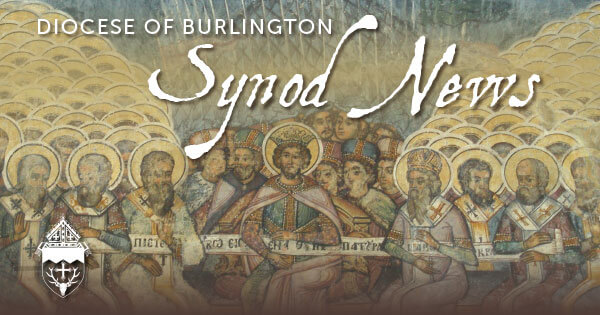
Diocesan Synod December update
With the three planned sessions of the Diocesan Synod completed, Burlington Bishop Christopher Coyne has decided there will be a fourth session.
“The reason for adding another session seems to be a desire to share with the delegates some sort of draft of the synod document (‘decrees and declarations’) and get their comments on it, as well as, hopefully, a consensus and advisory vote in favor of the document,” said Father Brian O’Donnell, executive secretary for the synod. “The original thought was to simply have the delegates approve the proposed recommendations at the third and final session and have the [synod] document drafting occur after that, but the bishop decided to involve the delegates more in that part of the process.”
The fourth session will take place at St. Joseph Cathedral in Burlington on Jan. 19 with a snow date of Feb. 2.
In the spring of 2017, Bishop Coyne announced plans to convene the first Diocesan Synod in Vermont since 1962. Its purpose is to establish a pastoral plan for the immediate future of the Catholic Church in Vermont and to establish particular laws and policies to do so.
Before the sessions of the synod were convened, all of the members of the Catholic community were invited to participate in a preparation process in which they were asked to pray, to listen, to learn and to discern what the future pastoral plan for spreading the “good news” of the Church in Vermont should be. This took place on parish, deanery and diocesan levels. It included personal meetings and made use of new digital and social media means of communication.
“I will seek input from all. I will listen to all. And I will discern with you all,” Bishop Coyne said.
The task of the synod was to discuss and decide how the Church in Vermont most effectively moves forward with the information and recommendations that have been gathered throughout the synod preparatory process.
Delegates to the Diocesan Synod had the opportunity to address the topic of evangelization in October at Immaculate Conception Church in Burlington during the first session.
The second session, at St. Anthony Church in White River Junction in October, focused on the word “vibrant” and how it is exhibited in parishes and how it is measured. Delegates also considered investigating new forms of lay and diaconal parish leadership, helping to free priests to focus more on pastoral ministry and less on administration.
The third synod session — focused on communications — took place at Immaculate Conception Church in Burlington in November. “There were multiple comments about trying to improve two-way communication, with the thought that although the Diocese is doing a good job sending communications to the parishes via a variety of media, communication back from the parishes to the Diocese may be harder,” Father O’Donnell said. “It was also noted that some of the diocesan efforts are sometimes frustrated at the parish level, where information is received from the Diocese but not always transmitted to the parishioners.”
Loretta Schneider, a synod committee member and delegate from St. Augustine Church in Montpelier, said she felt honored to be part of the synod. “We are blessed to have such a wonderful bishop who has involved the entire state in this process,”
she said. “The bishop has truly listened to the people of Vermont.”
She pointed to the “talent and enthusiasm” in the Vermont Catholic community, which she thinks will be better utilized as a result of the synod. “I look forward to seeing the fruits of this synod.”
For more information about the 2018 Diocesan synod, visit vermontcatholic.org/synod.
—Originally published in the Winter 2018 issue of Vermont Catholic magazine.

